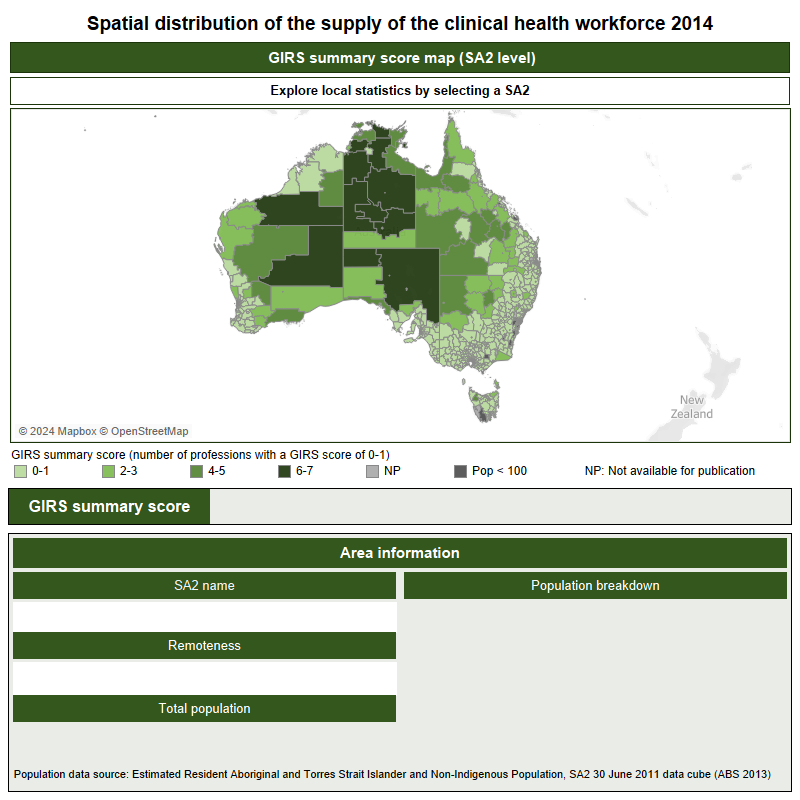GIRS summary score map
The Geographically-adjusted Index of Relative Supply (GIRS) summary score measures the consistency of relative workforce supply in geographic areas using GIRS scores across seven professions – GPs, nurses, midwives, pharmacists, dentists, psychologists and optometrists. That is, it counts the number of times that each geographic area has a GIRS score of 0 or 1 for each of the seven professions. It gives a summary score between 0 and 7, with higher values reflecting a higher number of workforce supply challenges for that area.
An interactive GIRS summary score map of Australia is presented.

The GIRS is indicative of potential workforce supply challenges in an each of the Statistical Area Level 2s (SA2s) in Australia. Several cautions must be noted. The workforce supply data are self-reports, refer to 2014, and include only those who responded to the survey component of the National Health Workforce Data Set (NHWDS). If a provider worked at more than one location, all of his/her hours were included, but attributed to the primary location only. Thus, if some of those hours were delivered outside the SA2 (such as through outreach clinics), the GIRS will underestimate workforce supply outside the primary practice SA2. The GIRS is also not a measure of the adequacy of services, whether services are financially or culturally accessible, nor of the extent to which they meet the needs of the population in each area.
For more information, see Chapter 6.9 ‘Supply of the health workforce for the Indigenous population’ and supplementary document S6.9 ‘Estimating the supply of the health workforce’.


